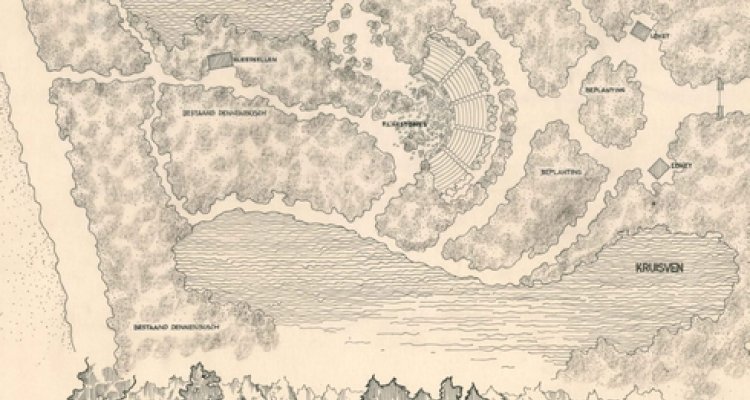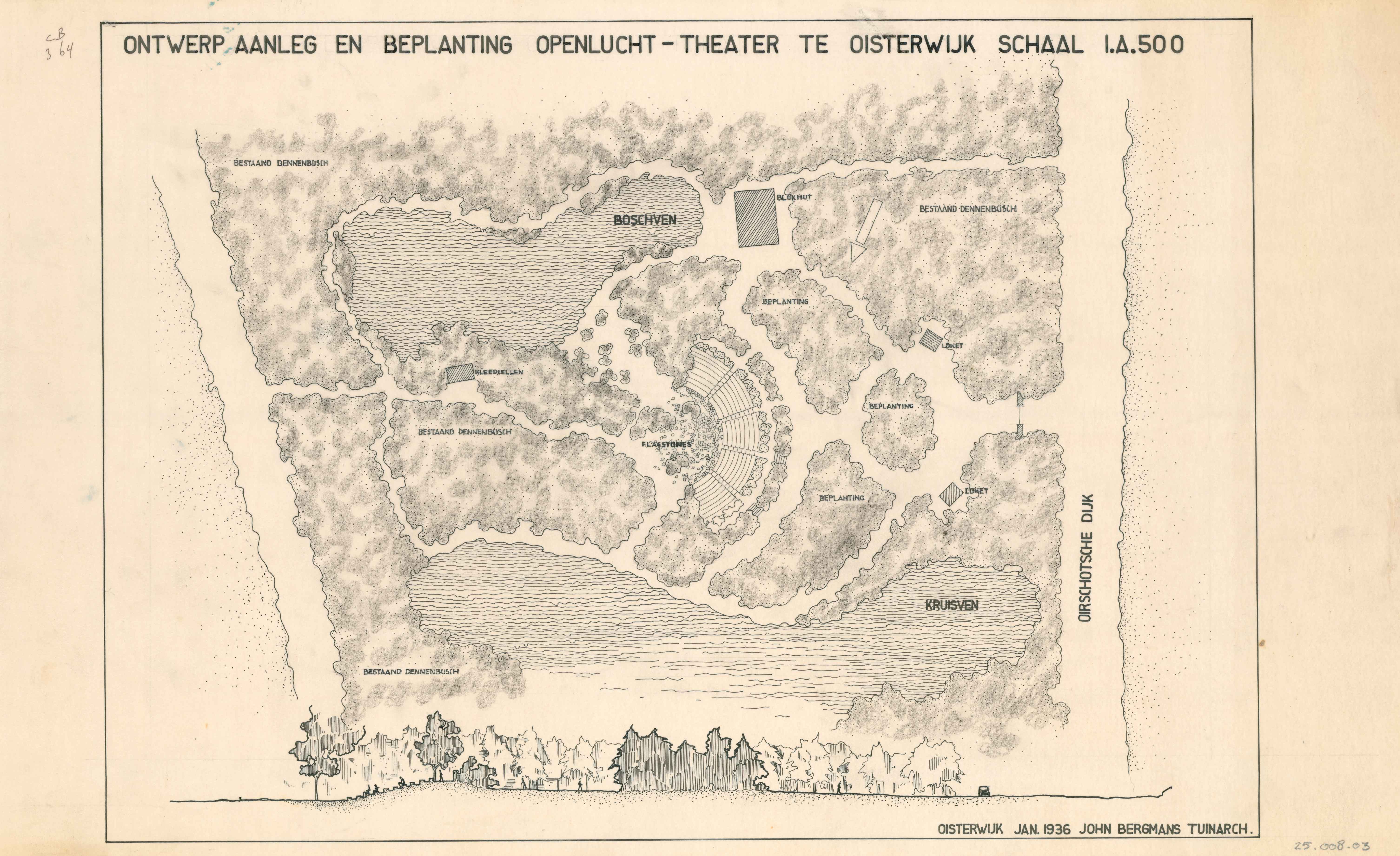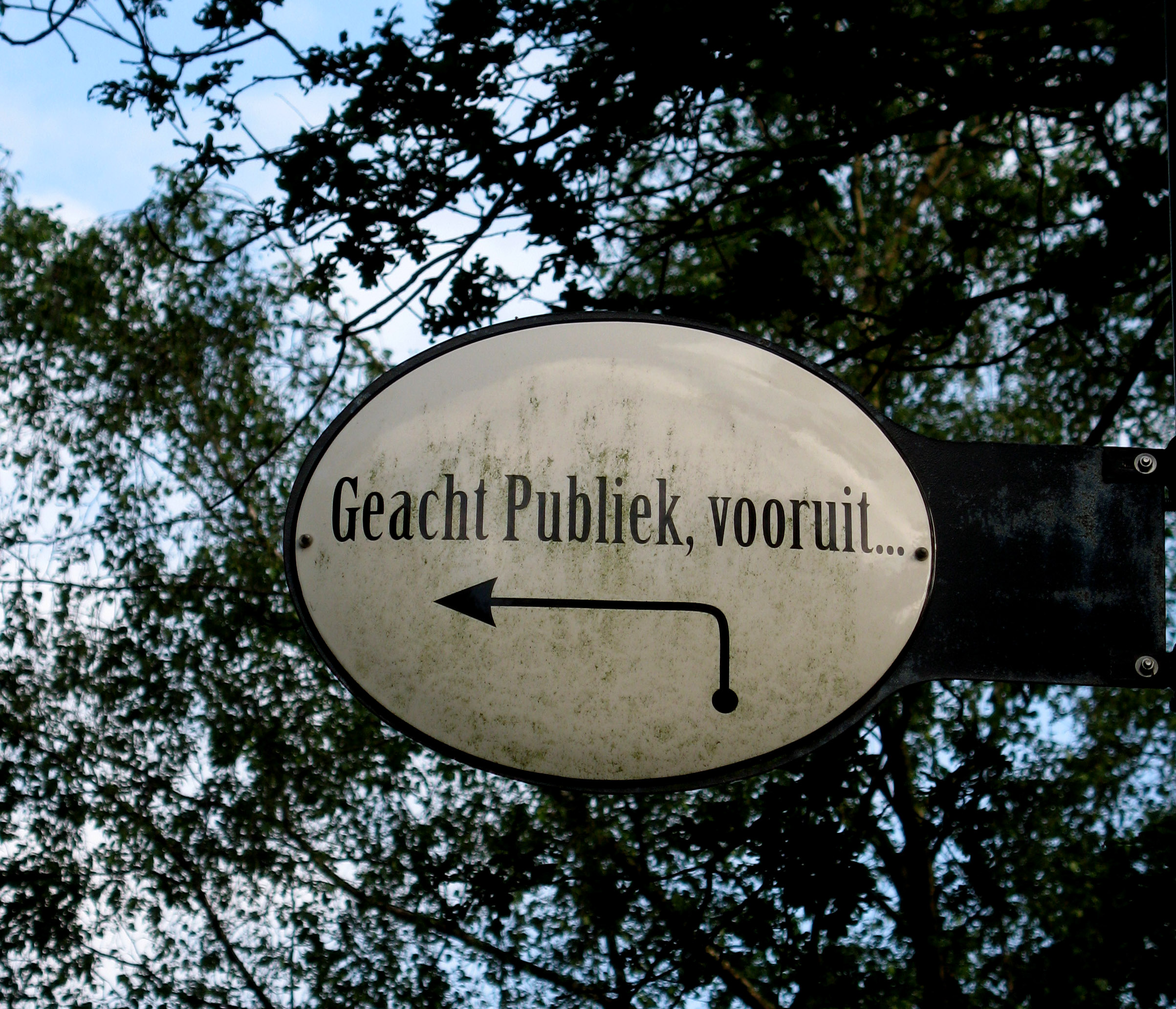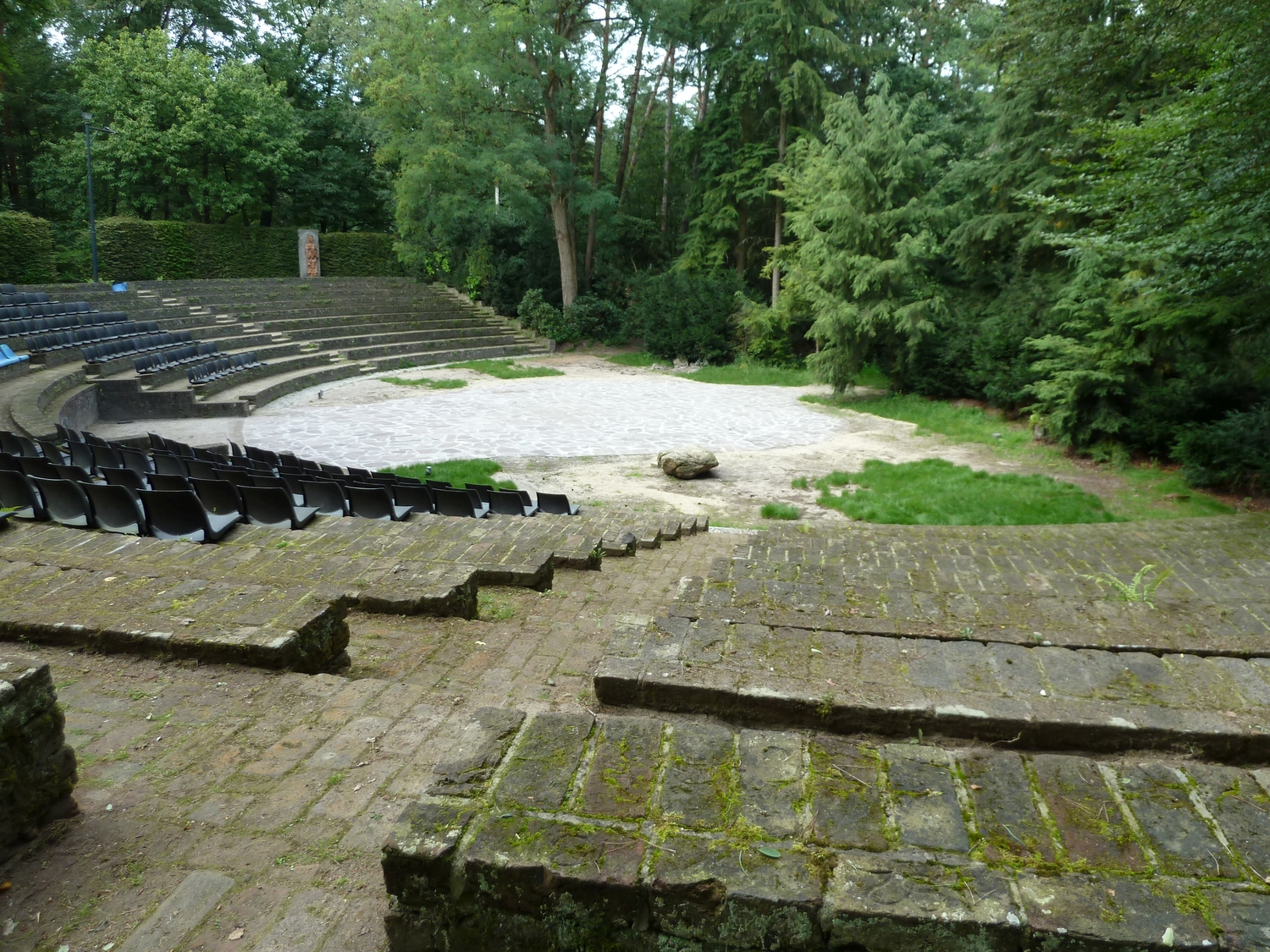
Open air theatre
In 1936, the municipality Oisterwijk started designing a permanent open air theatre. The reason: in the previous year the medieval mystery play at the Mariahof had attracted more than 20,000 spectators.
In terms of location, Bergmans advised a spot in the woods on the Gemullehoekenweg between Kruisven and Boschven. The founders, Chaplain Rovers and architect H.W. Valk (1886-1973) were inspired for their plans by the Roman theatre of Orange, in France. The municipal architect Bernard Vriens turned their sketches into building plans and John Bergmans designed the landscape framework.
Read further below
The theatre was simply cut out from the existing woods. To reduce static noise, the woods were made denser with the addition of small-leaf tree species such as maple, hemlock and birch. A beech hedge was planted around the tribune. Bergmans created a theatre entrance surrounded on both sides by sculptures and small picturesque entrance buildings. The forest path then fanned out to both sides, narrowed down again, and finally encircled the back of the round theatre. From there, steps led up and out of the woods to the tribune with a view of the podium and the green theatre wall.
The open air theatre in Oisterwijk has been a national heritage site since 2003 and it continues to be used every summer.
John Bergmans designed 5 open air theatres. Besides this one in Oisterwijk, four others in Limburg. Information and drawings can be found in Database TUiN.




